Abstract
OBJECTIVES--To assess the acute and chronic ophthalmological effects of triethylamine exposure among foundry workers. METHODS--Ocular effects on people currently, previously, and never exposed to triethylamine in a foundry cold box were studied at two points in time. The initial phase included an ocular examination with a slit lamp to assess corneal health, a visual acuity test, and a questionnaire to assess vision symptoms. The follow up included measurements of corneal thickness with an ultrasonic pachymeter and the vision symptoms questionnaire before and after the shift and at the beginning and end of the week. Personal air measurements for triethylamine were also obtained during the follow up. RESULTS--The vision symptoms of blurriness, halos around lights, and blue hazy vision occurred more often in currently exposed workers than those previously or never exposed to triethylamine. Air concentrations of triethylamine ranged from < 0.33 mg/m3 to 20.3 mg/m3. Among currently exposed workers, symptoms were more common among those with exposure to > 10 mg/m3 of triethylamine (odds ratio (OR) = 3.0, 95% confidence interval (95% CI) 0.35-25.6). No differences in corneal thickness were found in currently or previously exposed workers and those never exposed. No increase in corneal thickness was found after v before the shift. CONCLUSION--Despite low concentrations of triethylamine and no corneal oedema, workers exposed to triethylamine reported vision symptoms. Possible explanations for these symptoms without corneal oedema are that triethylamine affects ciliary muscle function or that the corneal oedema was transient and not present when corneal thickness measurements were taken. No chronic effects were found in previously exposed workers. Further research is needed to elucidate the mechanism for the reported vision symptoms, which occurred below the current United States eight hour time weighted standard of 100 mg/m3 and the American Conference of Governmental Industrial Hygienists (ACGIH) recommended value at the time of our study of 40 mg/m3. We recommend that air concentrations be maintained to meet the current recommended ACGIH threshold of 4.1 mg/m3.
Full text
PDF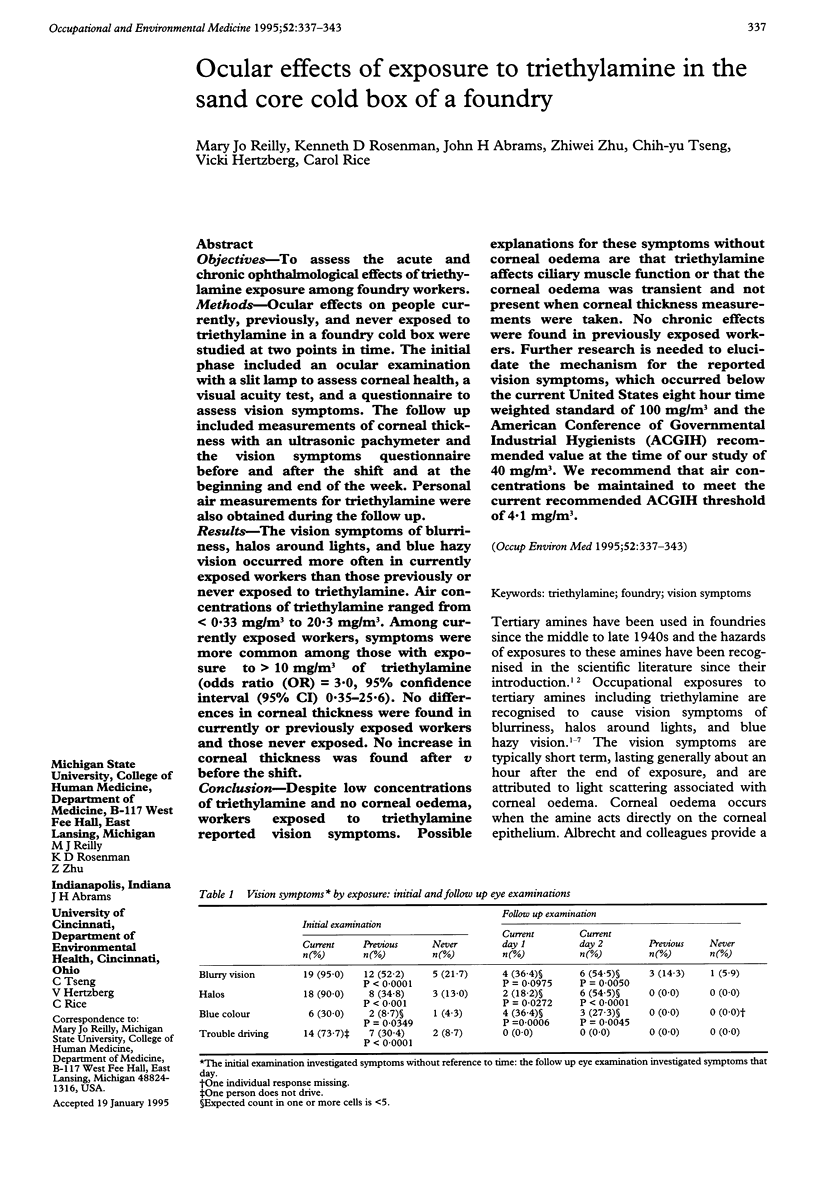
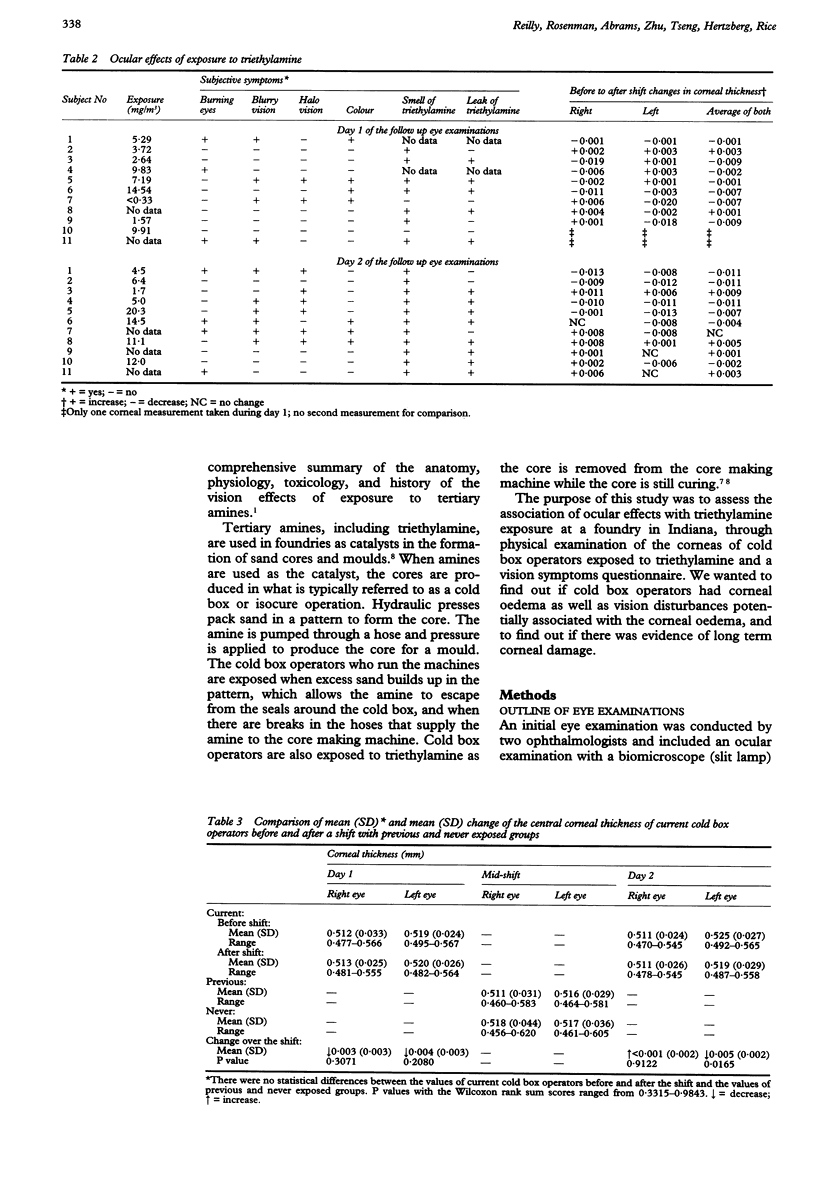

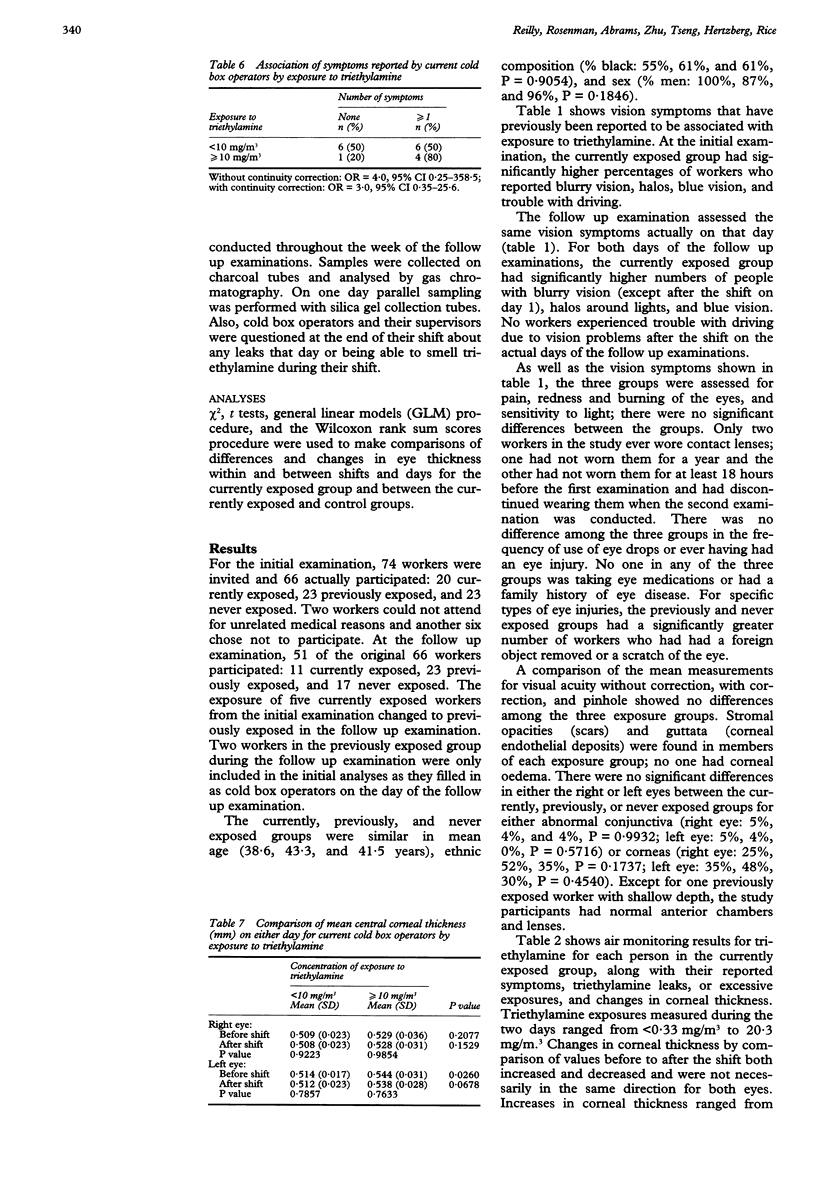
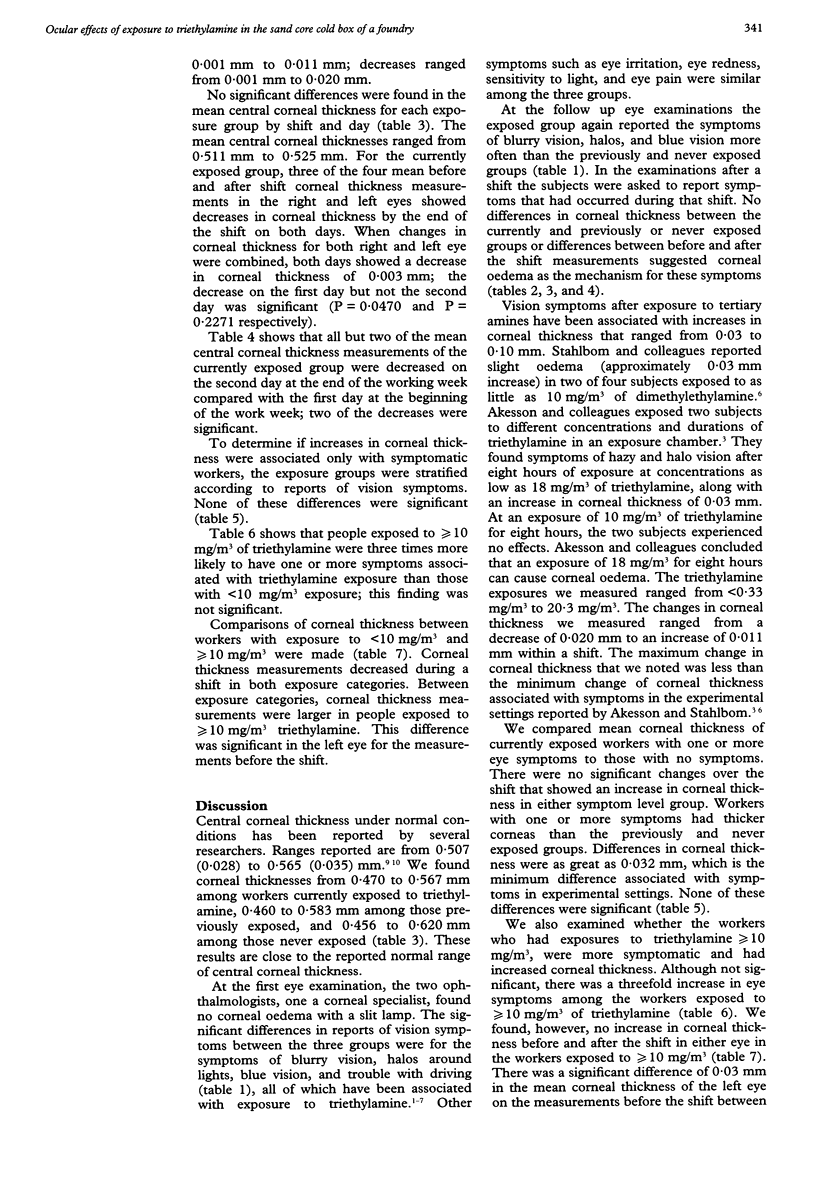

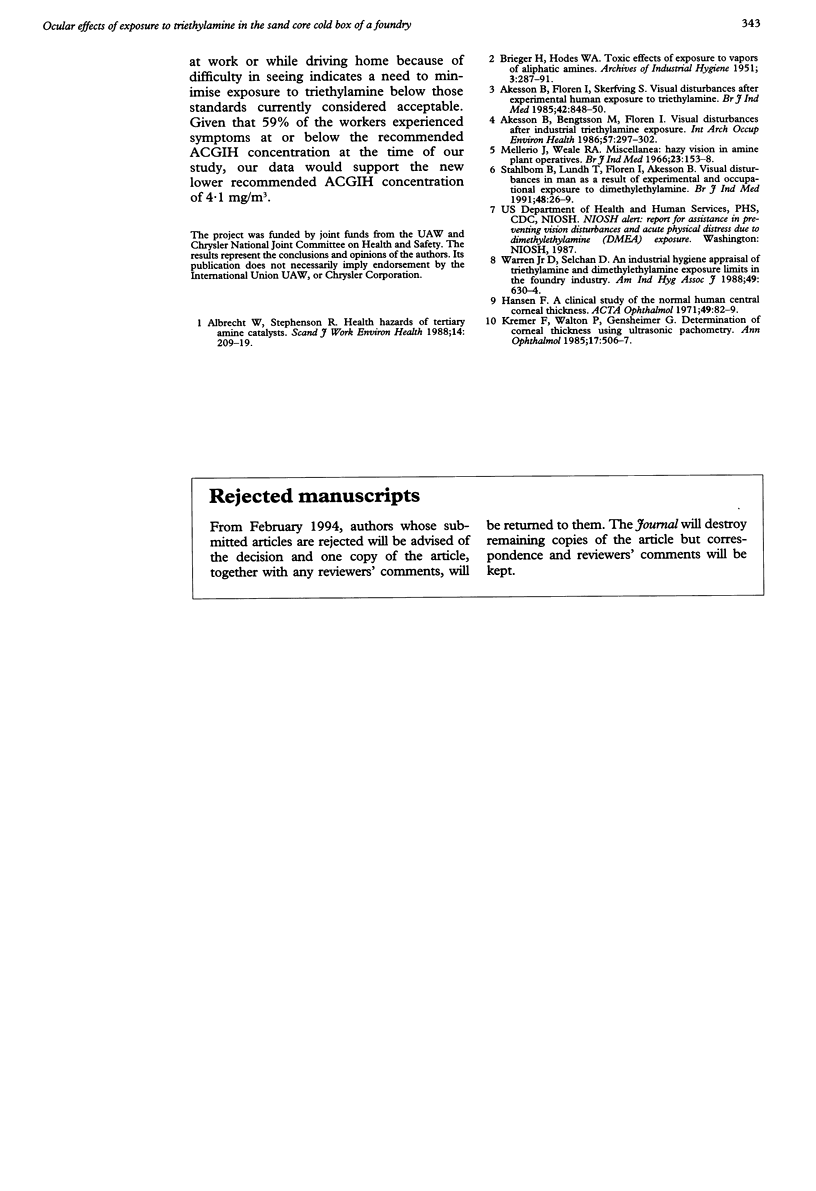
Selected References
These references are in PubMed. This may not be the complete list of references from this article.
- Akesson B., Bengtsson M., Florén I. Visual disturbances after industrial triethylamine exposure. Int Arch Occup Environ Health. 1986;57(4):297–302. doi: 10.1007/BF00406184. [DOI] [PubMed] [Google Scholar]
- Albrecht W. N., Stephenson R. L. Health hazards of tertiary amine catalysts. Scand J Work Environ Health. 1988 Aug;14(4):209–219. doi: 10.5271/sjweh.1930. [DOI] [PubMed] [Google Scholar]
- BRIEGER H., HODES W. A. Toxic effects of exposure to vapors of aliphatic amines. AMA Arch Ind Hyg Occup Med. 1951 Mar;3(3):287–291. [PubMed] [Google Scholar]
- Hansen F. K. A clinical study of the normal human central corneal thickness. Acta Ophthalmol (Copenh) 1971;49(1):82–89. [PubMed] [Google Scholar]
- Kesson B. A., Florén I., Skerfving S. Visual disturbances after experimental human exposure to triethylamine. Br J Ind Med. 1985 Dec;42(12):848–850. doi: 10.1136/oem.42.12.848. [DOI] [PMC free article] [PubMed] [Google Scholar]
- Kremer F. B., Walton P., Gensheimer G. Determination of corneal thickness using ultrasonic pachometry. Ann Ophthalmol. 1985 Aug;17(8):506–507. [PubMed] [Google Scholar]
- Mellerio J., Weale R. A. Hazy vision in amine plant operatives. Br J Ind Med. 1966 Apr;23(2):153–154. doi: 10.1136/oem.23.2.153. [DOI] [PMC free article] [PubMed] [Google Scholar]
- Ståhlbom B., Lundh T., Florén I., Akesson B. Visual disturbances in man as a result of experimental and occupational exposure to dimethylethylamine. Br J Ind Med. 1991 Jan;48(1):26–29. doi: 10.1136/oem.48.1.26. [DOI] [PMC free article] [PubMed] [Google Scholar]
- Warren D. W., Jr, Selchan D. F. An industrial hygiene appraisal of triethylamine and dimethylethylamine exposure limits in the foundry industry. Am Ind Hyg Assoc J. 1988 Dec;49(12):630–634. doi: 10.1080/15298668891380367. [DOI] [PubMed] [Google Scholar]


